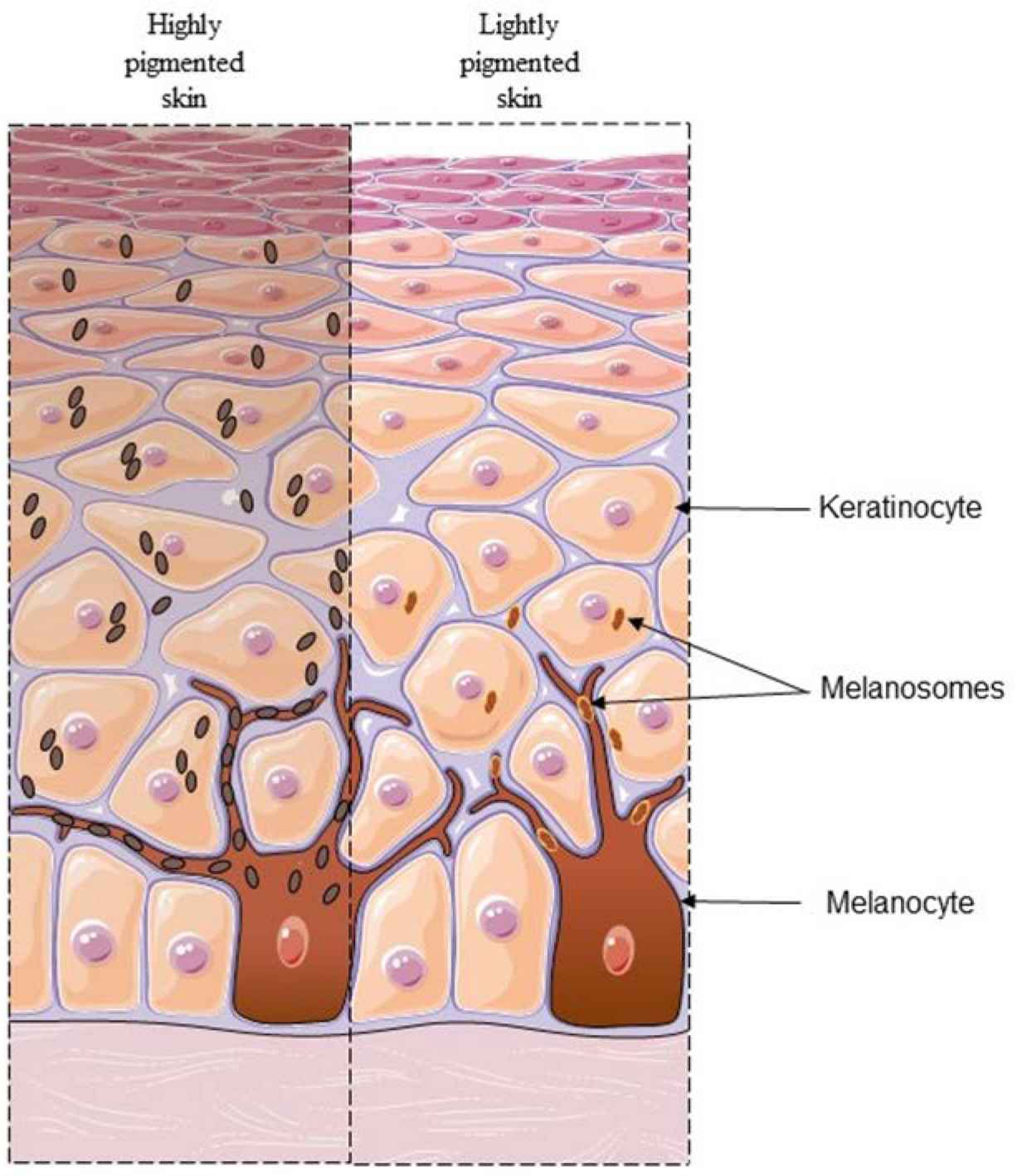The absence of illness samples or inappropriate research materials has historically slowed human disease-associated research, which has been dramatically advanced with the development of human iPSC and gene editing tools. With years of experience in the research field of iPSCs, Creative Biolabs has developed several reliable models to simulate the development of diseases and produces vibrant cell models to aid in the discovery of complex diseases such as pigmentation.
Pigmentation means the human natural skin color, whose disturbances are called pigmentation disorders. The main reason for pigmentation disorders is related to the overproduction or underproduction of melanin. In a normal physiological process, melanin is produced by neural crest-derived melanocytes and contained by special organelles called melanosomes for nearby keratinocyte transportation. Melanocyte loss, the inability of melanin production, or incorrect melanosome transportation can lead to pigmentation disorders. Genetic mutation, certain drugs, and sun exposure are three main factors contributing to pigmentation disorders.
 Fig.1 The differences between two kinds of skin color.1
Fig.1 The differences between two kinds of skin color.1
Human iPSC-derived cell model greatly speeds up disease research, Creative Biolabs can provide different cell models like iPSC-differentiated melanocytes. They show a stellate morphology and generate melanin-including melanosomes, plus a high expression of melanocyte markers such as MITF and tyrosinase related protein. iPSC-derived melanocytes, following the neural crest differentiation route, are a unique tool for pigmentation disorder-related pharmacology research and drug discovery.
The in vitro iPSC-derived 3D co-culture skin model incorporating melanocytes in epidermal keratinocytes exhibits similar morphological and ultrastructure to in vivo tissue and is another well-constructed cell model for pigmentation research. The melanocytes in the co-culture skin model can also lead to tissue pigmentation.
Mutation-contained iPSCs can also be applied in our cell models to explore the function and importance of specific genes.
Creative Biolabs provides several assays to detect pigmentation disorder-associated cell events by combining with our outstanding cell models to further enhance your research, including
Beyond the assays mentioned above, Creative Biolabs can also tailor custom assays to meet your research demands about the discovery of pigmentation disorder. For all the questions about pigmentation disorder, please feel free to contact us for more details about your projects.
Reference
For Research Use Only. Not For Clinical Use.